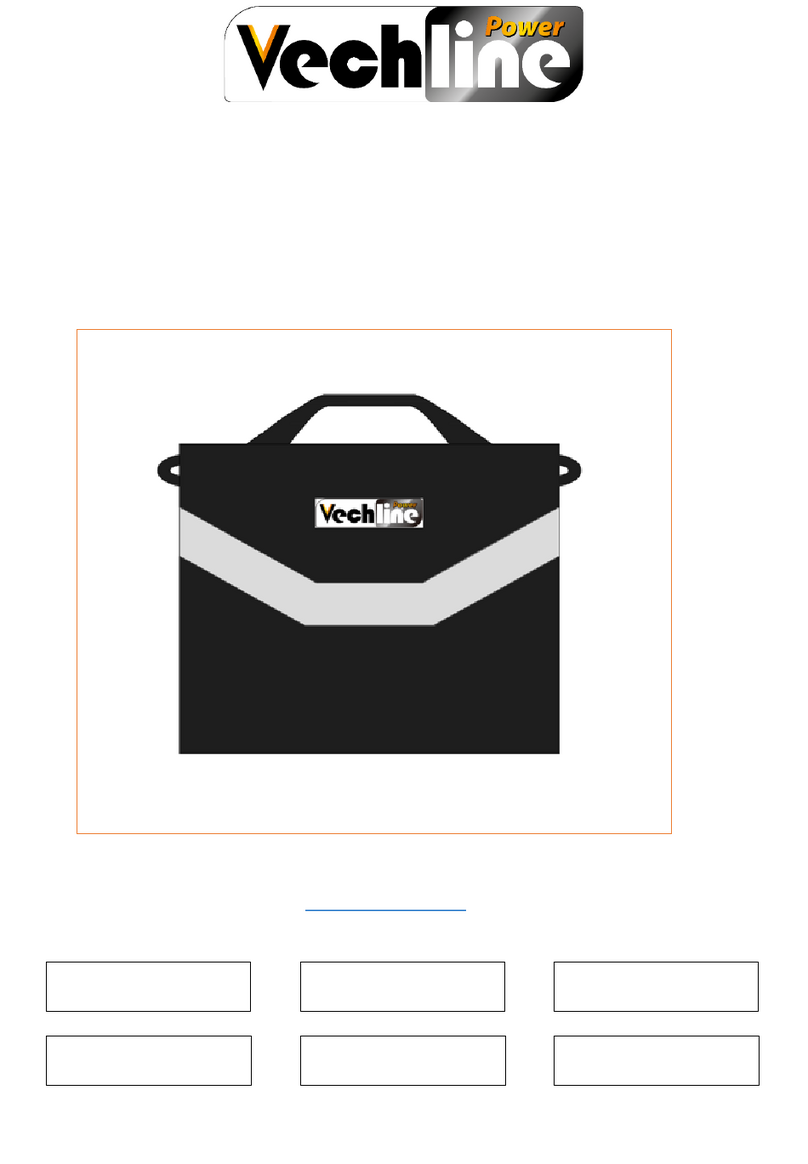
5
3. HOW TO USE INVERTER
3.1 Load consideration
When an appliance with motor starts, it requires a momentary surge of power. This surge of power
is the “start load”or “peak load”. Once started, the appliance require less power to continue to
operate. This is known as the “continuous load”. It is important to know the starting loads of the
appliance that are to be powered by the inverter. Appliance power is rated in watts. This
information is usually stamped or printed on most appliances and equipment. In some cases, a tool
will be rated in amperes. To convert from amps to watts, multiply:
Amps×AC voltage=Watts
The startup load of an appliance is a major factor of whether this inverter can power it. Startup
load is momentary. With many appliance, it is approximately twice the continuous load, but some
appliance start up loads can be as high as eight times the continuous load.
To determine if an appliance or tool will operate with this inverter, run a test. This inverter will
automatically shut down in the event of an output overload, so there is no danger of damaging
either the inverter or the equipment, When lit, a red LED indicator and Buzzer signals a fault.
3.2 Configuring the Battery Bank
To determine the minimum battery ampere-hour rating that you will need to operate appliance
from the inverter and any DC appliance power by the battery bank..
3.3 Battery Wiring Examples
In renewable energy systems, batteries are connected to each other in one of three ways :
Series(voltage increases, amperage stays the same as a single battery)
Parallel (voltage stays the same as a single battery, amperage increases)
Series/Parallel (both voltage and amperage increase)
3.4 Placement of inverter
The location where to install inverter must be:
A. Dry: Do not allow water to drip or splash onto it.
B. Cool: Ambient air temperature should be between 0℃and 40℃- idea11y between 15℃and
25℃.Do not place the inverter on or near a heating vent or any piece of equipment which is
generating heat above room temperature. Do not place the inverter in direct sunlight unnecessarily.
C. Ventilated: Allow at least one inch of clearance around the unit for air flow .Do not place items
on or over the inverter during operation. Make sure that air is allowed to circulate freely around
the unit.A fan is helpful in the case where the inverter is operating at maximum.
D. Safe: Do not install the inverter in the same compartment as the batteries or in any
compartment where flammable liquids or fumes may be or may become present.
E. Dust Do not install the inverter in a dusty environments. The dust can be inhaled into the unit
when the cooling fan is working.
F. C1ose to batteries: Avoid excessive cable lengths. Do not install the inverter in the same




























